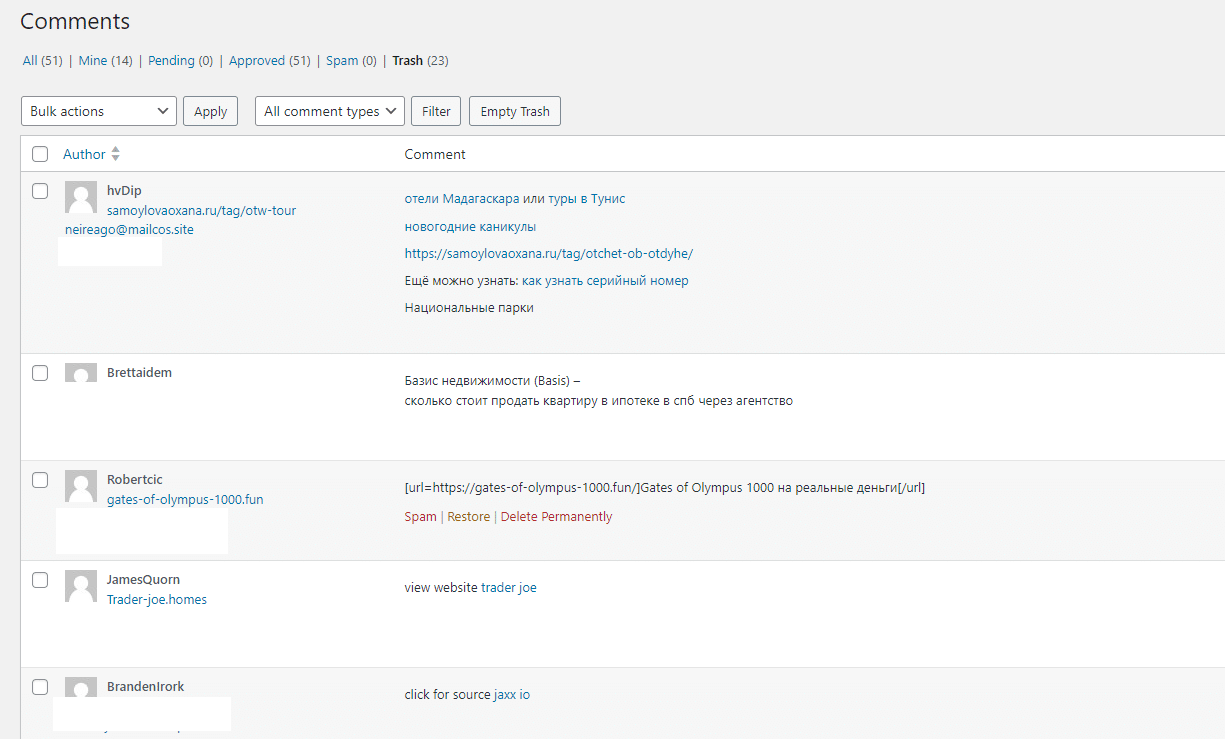WordPress SPAM comments
The majority of all comments you receive on a WordPress website are unfortunately SPAM comments. As a website owner, it's your job to identify as many SPAM comments as possible and then delete them. Of course, you don't want your website visitors to come across all sorts of references to erection enhancements or worse in the message box. In this blog post, we'll look at the different options you have to prevent this and how you can deal with it.
Enable the option to review every comment
The most important thing you should enable is the option to approve every post that is posted. You can do this in the following ways within WordPress. This will ensure that every time a post is published, you will receive an email asking you to rate it.

This ensures that no post goes live without you having seen it once. In the same settings, you can also specify whether or not you want to receive an email every time a new comment is posted. However, I recommend enabling this option as genuine contributors will naturally want to be promoted.
However, if you don't take any other action, you may receive a flood of emails about incoming posts with this setting alone. And with just this setting, we have not yet done any filtering to filter out SPAM. We cover this in the following sections.
Expand your integrated SPAM filtering in WordPress
In WordPress itself, you can ensure that filtering is also applied within posts by entering terms, IP addresses and other terms that should be sent to the trash by default. You can do this by going to Settings -> Discussion and then adding terms in the "Invalid comment keys" field.
By far the most effective terms are the following two: http https This will filter out almost any comment that tries to add a link, which 99.99% of the time is a SPAM comment, and send it straight to the trash. You can also expand this list with terms you come across that are not yet filtered out. This way you can create your own SPAM list, which will filter out more and more as the number of comments increases.
Consider removing the "Website" field in the message box
Another action you can take is to remove the "Website" field from the options a visitor has to leave a comment. This can be done by making an addition in the WordPress functions.php.
To make your job easier, you can install a corresponding plug-in, but you can also create a plug-in for this yourself. In a future blog post and knowledge base article, we will explain this process in more detail and show how you can add changes or functions to your WordPress website yourself.
Consider a plugin to stop more SPAM from third parties
You can also install an existing plugin to stop SPAM. The big plug-ins that are popular for this are often connected to third-party websites and databases, so you'll need to include this in your privacy policy too. In addition, this is often associated with a large number of functions that are not absolutely necessary. For these reasons, we often advise against using them in this way.
Disable comments on your website completely
Managing posts on your site will be an ongoing task on your WordPress site, so make a plan beforehand on how you're going to handle it. And if you don't want any extra work, consider disabling posts on your site altogether. You can do this with the following setting on the discussion page:

Then disable the following option: allow comments on new posts. And then go back to your existing posts to implement this option for your already published work as well. This is of course a drastic measure, but often any discussion about your work will no longer take place on your website itself, but on social media channels. So it's a consideration you can make to save yourself this work.
That doesn't change the fact that you often have to stay active on social media to keep the discussion going. How do you handle posts within WordPress? Let us know if you do!
